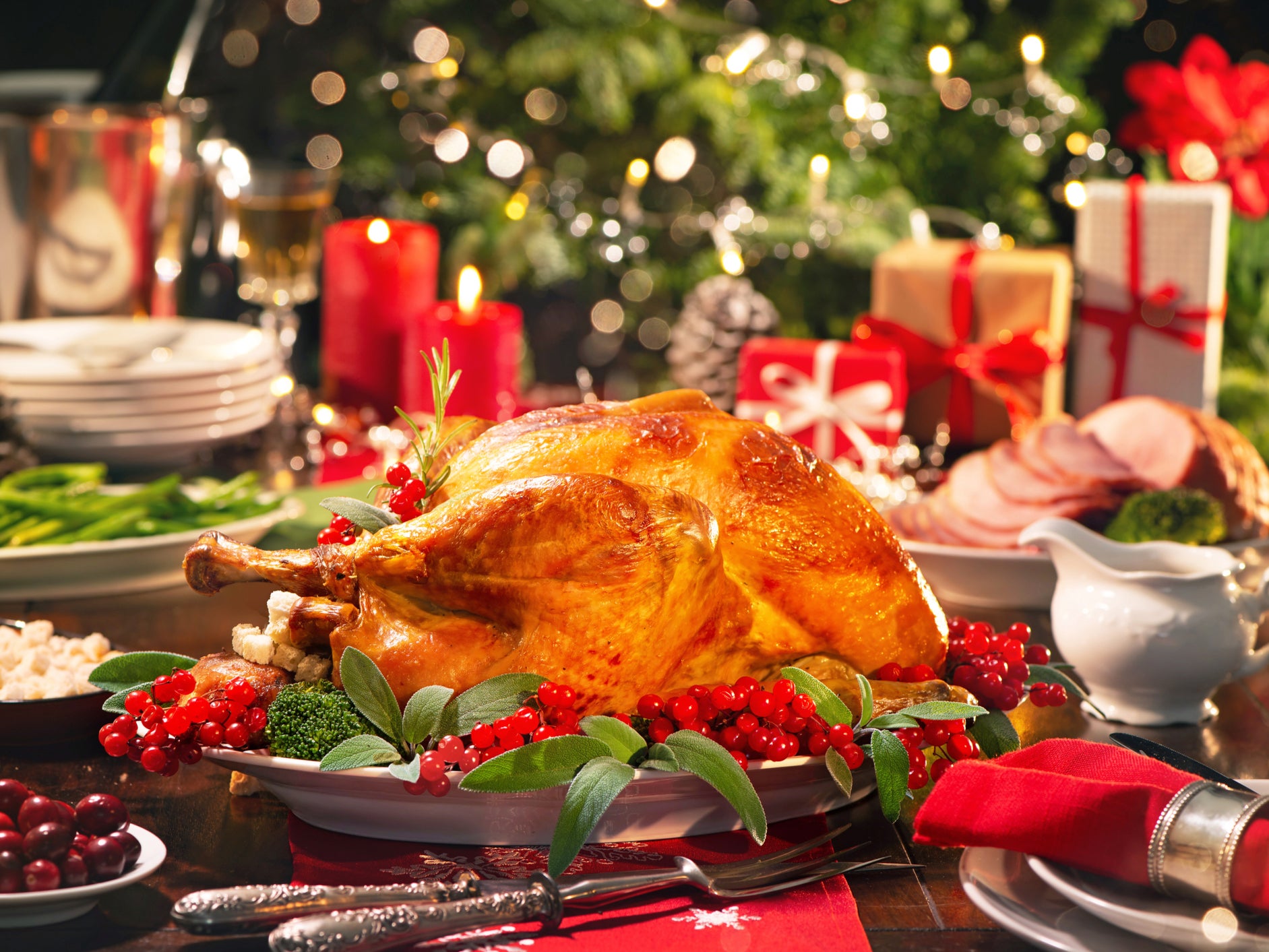
With Christmas tomorrow, families across the country are making their preparations for the big dinner.
With an array of different dishes to prep, it can be an overwhelming experience trying to cook everything perfectly at the same time - no one wants a burnt turkey, right?
If you’re worried about your roast potatoes not being crispy enough, your turkey being dry or wondering how to make your Christmas dinner memorable, then look no further...
Who better to listen than Jeff Baker, Executive Development Chef from Farmison & Co, who has revealed several helpful tips on how executive a mouth-watering Christmas dinner.
Turkey - the main event
Let’s be honest, the turkey is a key part of Christmas dinner. But due to the different processes, it can be difficult to get right, so Baker has given a step-by-step guide to cooking a delicious turkey.
On stuffing
“When it comes to stuffing your bird, I’d recommend doing this on the day of roasting. Try not to pack the stuffing into the neck cavity too tight, as this will prevent it from cooking evenly. Simply add the weight of the stuffing to the weight of the bird to make sure you calculate the correct cooking time,” he told The Mirror.
How to keep the turkey moist
“A simple and delicious way to keep your turkey moist, and enhance its flavour, is to gently push a generous amount of softened butter under the skin. The butter will add flavour to the meat and baste it at the same time.”
Sign up to our free Indy100 weekly newsletter
On roasting
“When it comes to roasting, I’d recommend using a meat thermometer, so as to make sure the bird is fully cooked. Ensure that you pierce the thickest part of the turkey meat and hold the thermometer for 10 seconds to acquire a true temperature reading - 68°C should be the core temperature.”
Pigs in blankets - the family favourite
While the turkey may be the main event, we all know that pigs in blankets are the overwhelming crowd pleaser and a Christmas dinner staple - so it’s important not to overcook and burn them, as Baker advises how to avoid this.
What to use to cook them
“It’s important not to burn the bacon - no one wants a charred blanket! Start by gently heating a heavy-based, non-stick frying pan and begin the cooking process by rendering some base fat - giving a light caramelisation.
Cooking the blankets
“Try not to overcrowd the base of your pan as the sausages need to sit fully flat, with enough room to be turned over. If you turn them regularly and cook them evenly over medium heat for around 3-4 minutes, your sausages should be a light golden colour. You can then pop them into roast for a further 6-8 minutes.”
How to avoid burning
“To ensure that you don’t overcook your sausages, gently press them with your thumb to check how they spring back - the more buoyancy you get back the more well-done your sausages will be.”
Roast potatoes - keep them crispy
Having crispy roast potatoes is key to having a delicious Christmas dinner - so soggy roasties must be avoided and Baker explains how you can stop this and instead cook ones with a crunch.
Which potatoes are best
“When it comes to choosing which potatoes to roast, I always recommend King Edwards or Maris Piper potatoes. They’re the best potatoes for the job and, when cooked properly, leave you with gorgeous crispy-edged spuds with fluffy middles.”
How much oil to use
“Though we all love a crispy roast potato, it can be really easy to mess them up. If you drown them in too much oil, they’ll burn on the outside and be undercooked on the inside. In order to avoid such a disaster, it’s important to fluff up your potatoes before roasting them - my preferred method is steaming.”
The length of time the roasties should cook for
“If you’re unsure on how long to cook your spuds for, I would recommend at least 30 minutes at 200 degrees whilst checking them every now and again. Give them a shake every now and then to increase the crispiness. If you are still unsure after 40 minutes, take a potato out and give it a try. Not only can you check whether they are ready but you get first dibs on the crispiest roasties!”
Gravy - the staple
Serving as the sauce that ties everything together, the role of gravy in a Christmas dinner cannot be understated. With this in mind, Baker shares his favourite kind of gravy, and how to get the right thickness it.
The best kind of gravy (in Bakers opinion)
In my opinion, traditional giblet gravy is unbeatable - so be sure not to throw them away once you’ve removed them from your turkey.
“Not only can you achieve a delicious, thick gravy with your turkey giblets, it also means that you aren’t wasting any of the bird either.
Thickening the gravy
“Once you’ve added some stock to your browned giblets, the gravy can be thickened using a little cornflour mixed with some cold water.
How to make gravy meatier
“To make the gravy even meatier, you can simply deglaze the roasting tin you used to cook your turkey and scrape up any of the remaining sediment juices to achieve a rich, satisfying flavour.”
Root vegetables - make them flavoursome
There are so many different ways to cook root vegetables and they are essential for a Christmas dinner as a healthy addition alongside the carbs and meat on the dish. So Baker explains what he would do with the parsnips and carrots.
Baker’s prefered method
“There are a number of ways you can put together your root vegetables, but I like poaching with a butter emulsion scented with anise. Once the vegetables are just tender, remove from the liquid and boil this to a syrup.
“Add the vegetables back to the syrup then simply give the pan a gentle shake until they turn a golden caramel. Then, season with sea salt and black pepper. The sweet and salty flavours will work wonders!”
Brussel sprouts - the marmite of Christmas dinner
While some hate Brussel sprouts, we have to admit that some people will eat the vegetable tomorrow and so Baker explains how to make the divisive side tasty.
Baker’s prefered method
“Though many people like to keep it simple and sprinkle their sprouts with just some salt, I like to add some additional flavours. For me, sprouts work exceptionally well with a nut crumb and some fresh, juicy pomegranate seeds.
“Start by dropping your sprouts into salted, boiling water for 5 to 6 minutes, drain and slice them into even halves. To make the nut crumb, put breadcrumbs, lemon zest and chopped walnuts into a blender and blitz them. Then, toast them gently until golden brown.
Once you’ve sautéed your sprouts in salted butter and spooned them into a serving dish, scatter the nut crumb over the sprouts and finish with a few fresh pomegranate seeds.”
Cranberry sauce - a fruity addition
While Cranberry sauce isn’t necessary a staple on everyone’s Christmas dinner, Baker describes why adding the fruity sauce will elevate your plate.
“You can really elevate your cranberry sauce and give it an edge by simply adding the odd ingredient - such as a splash of rich port, a little spiced ginger, hot chilli flakes, or even some candied orange zest.
“Though you can use frozen cranberries, I’d suggest using fresh ones so as to max out on flavour - these should take around 8-10 minutes to simmer until tender.
“Cranberry sauce thickens naturally as it cools, so be sure to leave your sauce in your fridge for around a week before serving. On Christmas day, take it out in the morning to bring to room temperature before serving.”
Hopefully, after Baker’s tips, you will have a Christmas dinner to remember.







